A brand new 16 unit GEA milking parlour has reduced milking times by 3.5 hours per day for Macroom farmer Sean Kelleher. Sean is milking 80 cows between Macroom and Baile Bhuirne in north Cork. The farmyard straddles the busy N22 and when standing in the new milking parlour, you can hear the cars and lorries constantly whizzing by outside. That’s set to change as the next section of the bypass opens later this year.
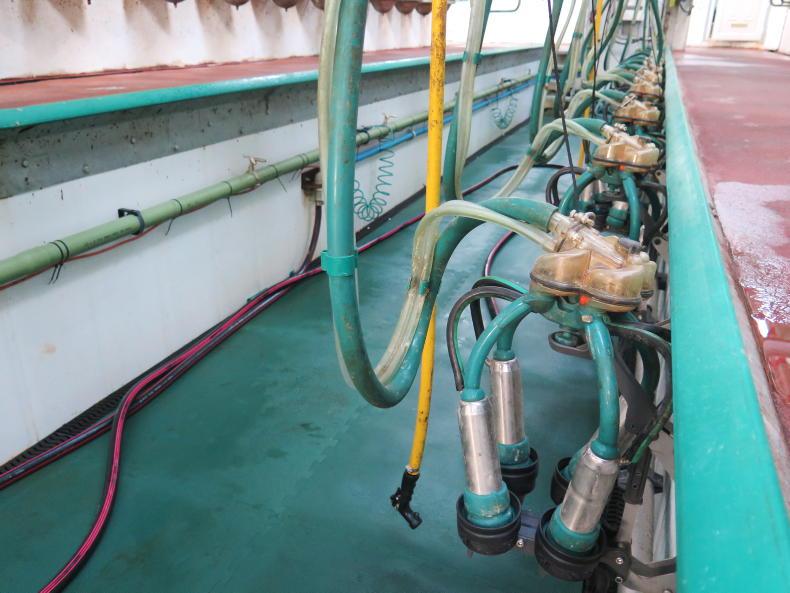
The GEA cluster has four compartments, with the vacuum for each quarter going on when the cluster is presented to the teat, meaning there is no need for dummy teats and no vacuum escaping before the cluster is put on.
The new parlour is built alongside the old six-unit parlour, but the new facility is a serious upgrade, with roofed and slatted collecting yard, automatic drafting and a roofed handling area.
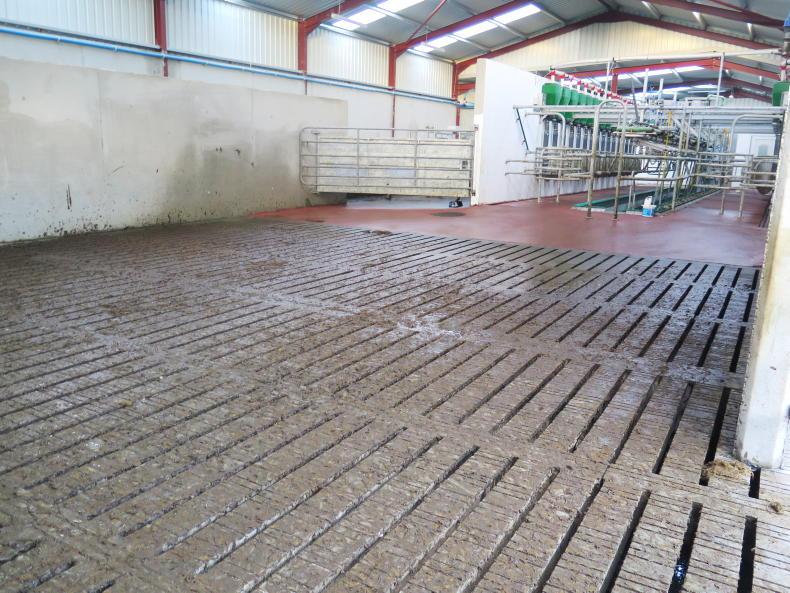
The collecting yard is slatted and covered which Sean says is futureproofed.
Sean went for a high-spec GEA parlour, installed by Jack O’Brien and his team from GEA in Ballincollig. The plant has automatic cluster removers, ICAR-approved milk meters, a GEA meal feeding system, variable speed vacuum and milk pumps, cluster wash and autowash.
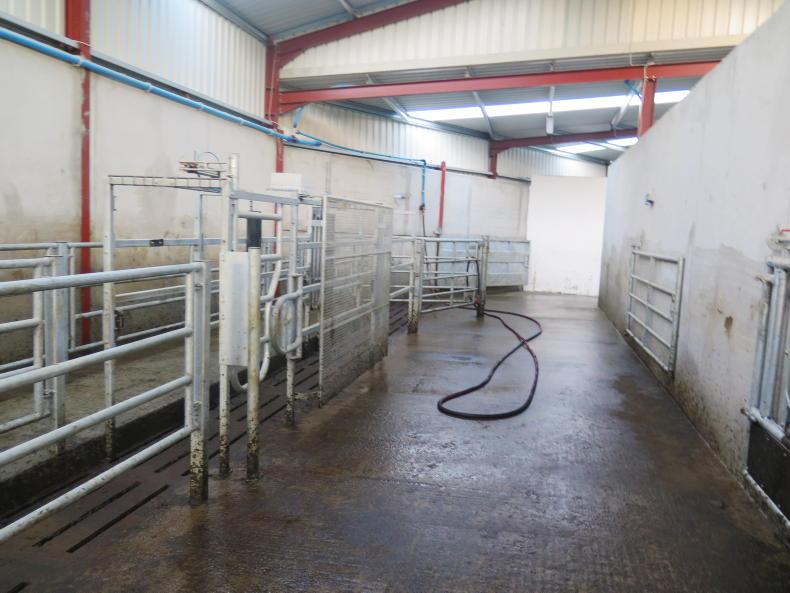
The handling unit contains automatic drafting gate and cattle crush.
Sean says he went for the cluster wash not because he has an SCC problem, but to prevent one from developing, especially now as he is doing more selective dry cow therapy.
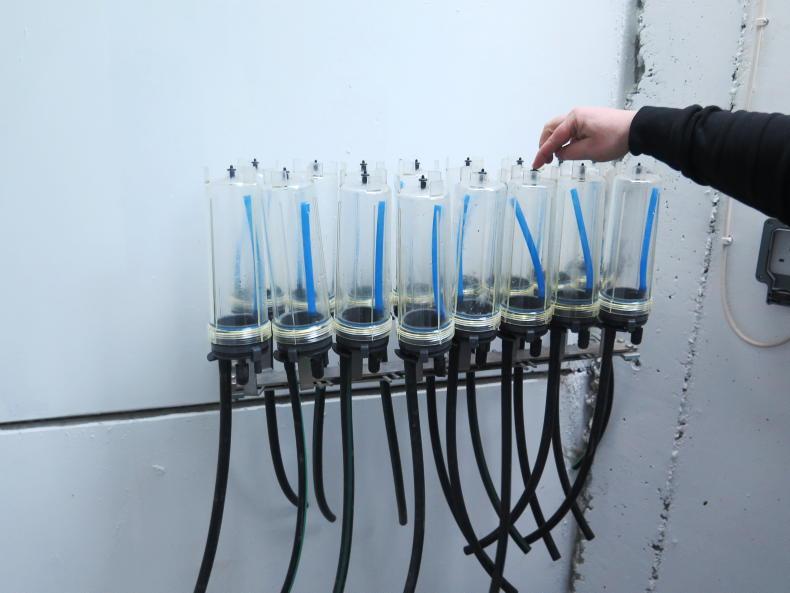
GEA milk meter sampling jars are put on to the ICAR-approved meters when milk recording.
Between the cluster wash and the fact that the GEA cluster has individual quarter milking, meaning that the milk from one-quarter doesn’t make contact with milk from another quarter until it reaches the line, cross contamination is minimised.
The ICAR-approved milk meters work well and Sean has carried out two milk recordings since the plant was installed in September.
He says the recorder can check the yield on the digital display and then agitate and take the sample, all by twisting the sampling jar. The jars remain on the machine for washing.

GEA milk meter sampling jars are put on to the ICAR-approved meters when milk recording.
Local builder Tim Lyons carried out all the building work, including making and erecting the shed and all concrete work.
“I couldn’t praise him highly enough, as it was a difficult enough site to work in, but he did a great job. The parlour tapers in at the front, but he made everything fit and there are lots of channels in the floors, so you’re never washing too much of an area at once,” Sean says.
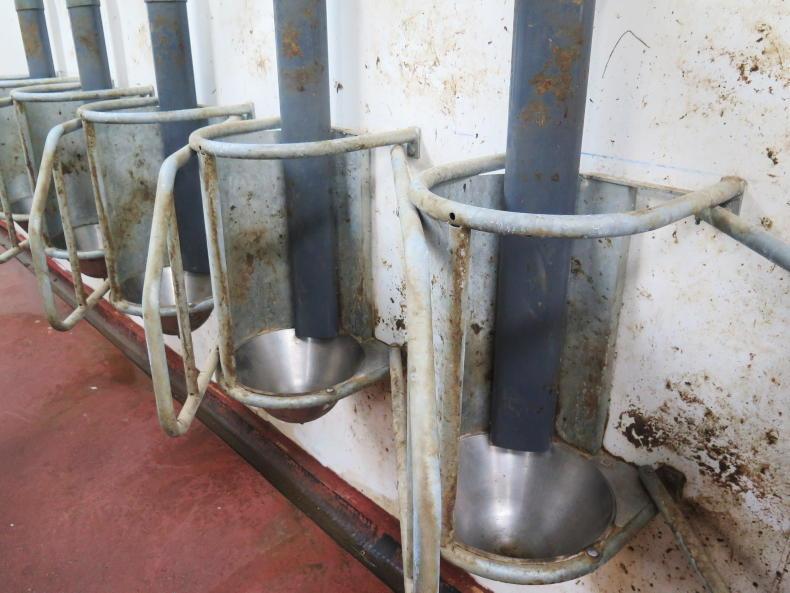
Meal troughs are manufactured by GEA.
One of the more unusual aspects of the GEA plant is that the vacuum and milk lines are looped, which they say leads to more consistent vacuum. Each unit is connected to alternating sides of the loop.

Automatic wash system is installed in the plant room.
Jack O’Brien from GEA says that the design means that a 3in bore milk line is standard, even for larger units, because the internal area of a looped milk line is much greater.
Sean says the dump buckets and low level vacuum line work well also.
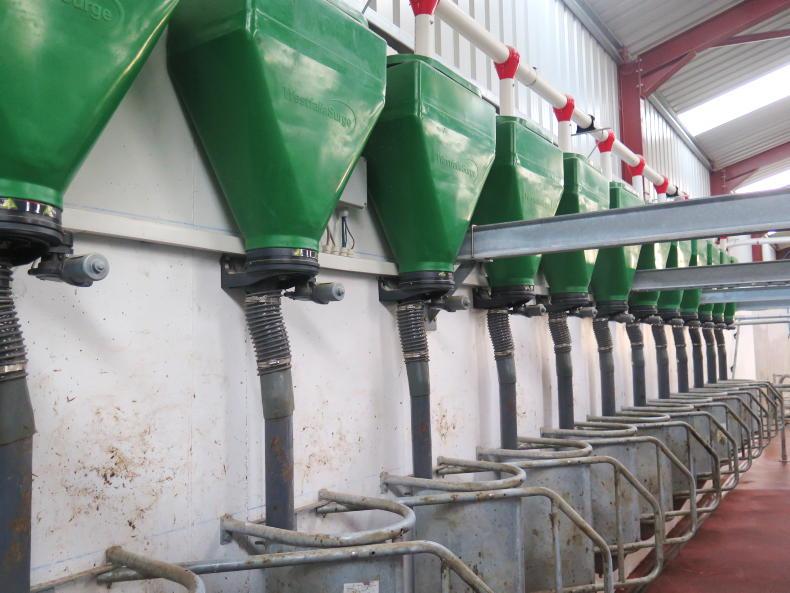
The meal feeders are controlled by a programmer in the pit and cows can be fed individually. Sean could upgrade to feed-to-yield in time.
He says he hadn’t much interest in a dump line and the fact that the dump buckets have their own cluster means that cross infection is also minimised. The air gates at the front and back are operated by a vacuum from the milking machine and they can be controlled at every milking unit.
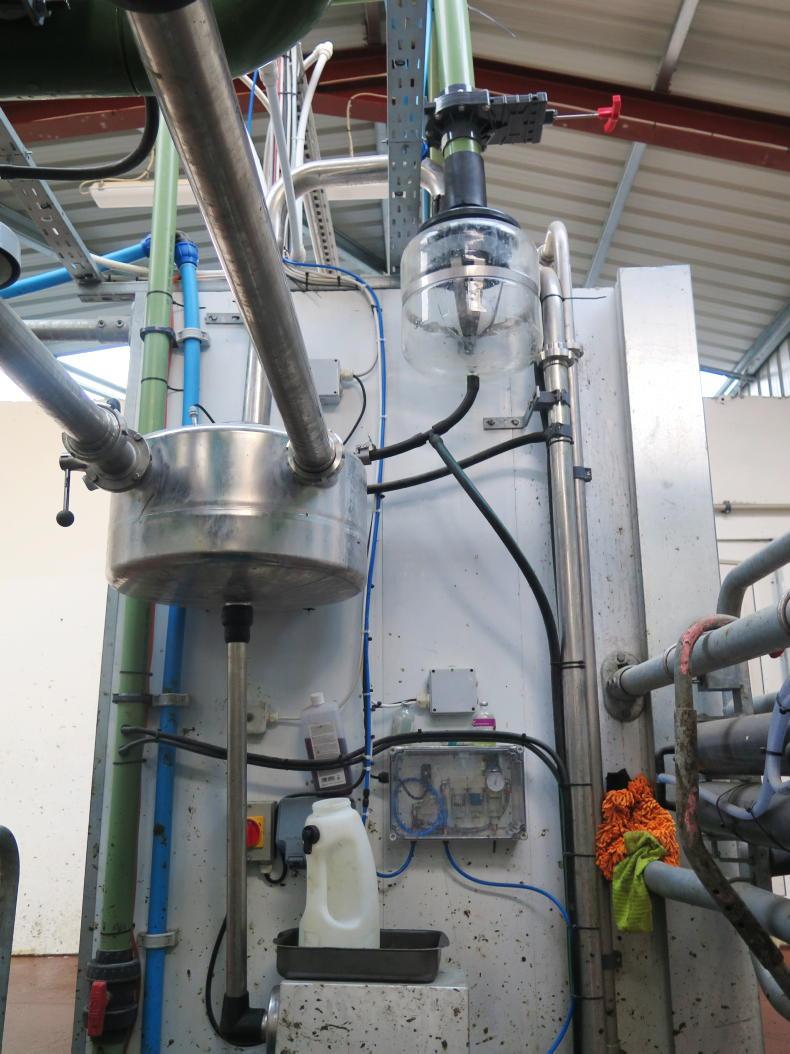
The milk and vacuum lines are circular, which GEA say gives a more uniform vacuum in all units.
Cost wise, Sean says the plant cost €110,000 excluding VAT and before the 40% TAMS grant was claimed back. He was able to claim this on the 16-unit milking parlour, meal feeders, meal bin and plate cooler. He says he had the plant ordered well before the big increases in costs hit and that if he was doing it now, it would likely cost a good bit more.
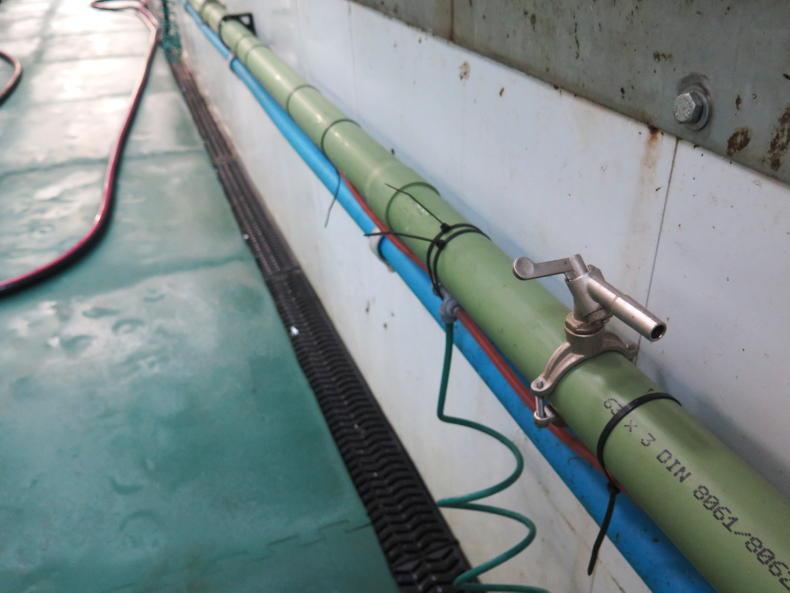
Dump buckets are plugged into one of eight valves on the low line vacuum for milking cows into dump buckets. Each bucket has its own cluster and pulstator.
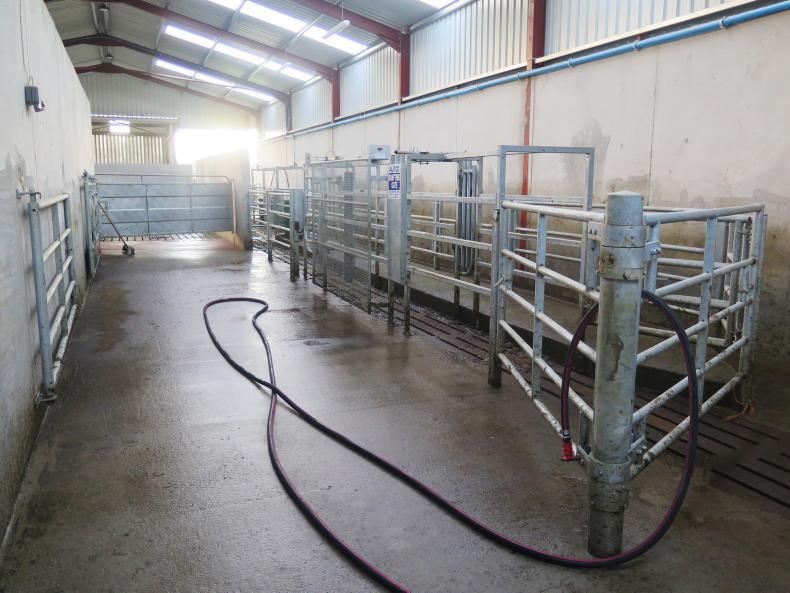
There is an Alfco drafting gate installed in the handling unit.
A brand new 16 unit GEA milking parlour has reduced milking times by 3.5 hours per day for Macroom farmer Sean Kelleher. Sean is milking 80 cows between Macroom and Baile Bhuirne in north Cork. The farmyard straddles the busy N22 and when standing in the new milking parlour, you can hear the cars and lorries constantly whizzing by outside. That’s set to change as the next section of the bypass opens later this year.

The GEA cluster has four compartments, with the vacuum for each quarter going on when the cluster is presented to the teat, meaning there is no need for dummy teats and no vacuum escaping before the cluster is put on.
The new parlour is built alongside the old six-unit parlour, but the new facility is a serious upgrade, with roofed and slatted collecting yard, automatic drafting and a roofed handling area.

The collecting yard is slatted and covered which Sean says is futureproofed.
Sean went for a high-spec GEA parlour, installed by Jack O’Brien and his team from GEA in Ballincollig. The plant has automatic cluster removers, ICAR-approved milk meters, a GEA meal feeding system, variable speed vacuum and milk pumps, cluster wash and autowash.

The handling unit contains automatic drafting gate and cattle crush.
Sean says he went for the cluster wash not because he has an SCC problem, but to prevent one from developing, especially now as he is doing more selective dry cow therapy.

GEA milk meter sampling jars are put on to the ICAR-approved meters when milk recording.
Between the cluster wash and the fact that the GEA cluster has individual quarter milking, meaning that the milk from one-quarter doesn’t make contact with milk from another quarter until it reaches the line, cross contamination is minimised.
The ICAR-approved milk meters work well and Sean has carried out two milk recordings since the plant was installed in September.
He says the recorder can check the yield on the digital display and then agitate and take the sample, all by twisting the sampling jar. The jars remain on the machine for washing.

GEA milk meter sampling jars are put on to the ICAR-approved meters when milk recording.
Local builder Tim Lyons carried out all the building work, including making and erecting the shed and all concrete work.
“I couldn’t praise him highly enough, as it was a difficult enough site to work in, but he did a great job. The parlour tapers in at the front, but he made everything fit and there are lots of channels in the floors, so you’re never washing too much of an area at once,” Sean says.

Meal troughs are manufactured by GEA.
One of the more unusual aspects of the GEA plant is that the vacuum and milk lines are looped, which they say leads to more consistent vacuum. Each unit is connected to alternating sides of the loop.

Automatic wash system is installed in the plant room.
Jack O’Brien from GEA says that the design means that a 3in bore milk line is standard, even for larger units, because the internal area of a looped milk line is much greater.
Sean says the dump buckets and low level vacuum line work well also.

The meal feeders are controlled by a programmer in the pit and cows can be fed individually. Sean could upgrade to feed-to-yield in time.
He says he hadn’t much interest in a dump line and the fact that the dump buckets have their own cluster means that cross infection is also minimised. The air gates at the front and back are operated by a vacuum from the milking machine and they can be controlled at every milking unit.

The milk and vacuum lines are circular, which GEA say gives a more uniform vacuum in all units.
Cost wise, Sean says the plant cost €110,000 excluding VAT and before the 40% TAMS grant was claimed back. He was able to claim this on the 16-unit milking parlour, meal feeders, meal bin and plate cooler. He says he had the plant ordered well before the big increases in costs hit and that if he was doing it now, it would likely cost a good bit more.

Dump buckets are plugged into one of eight valves on the low line vacuum for milking cows into dump buckets. Each bucket has its own cluster and pulstator.

There is an Alfco drafting gate installed in the handling unit.

















 This is a subscriber-only article
This is a subscriber-only article







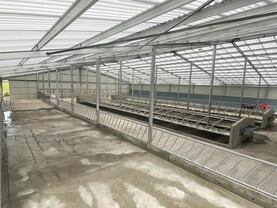


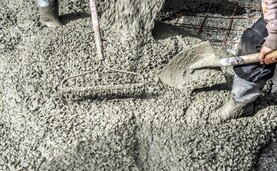
SHARING OPTIONS: